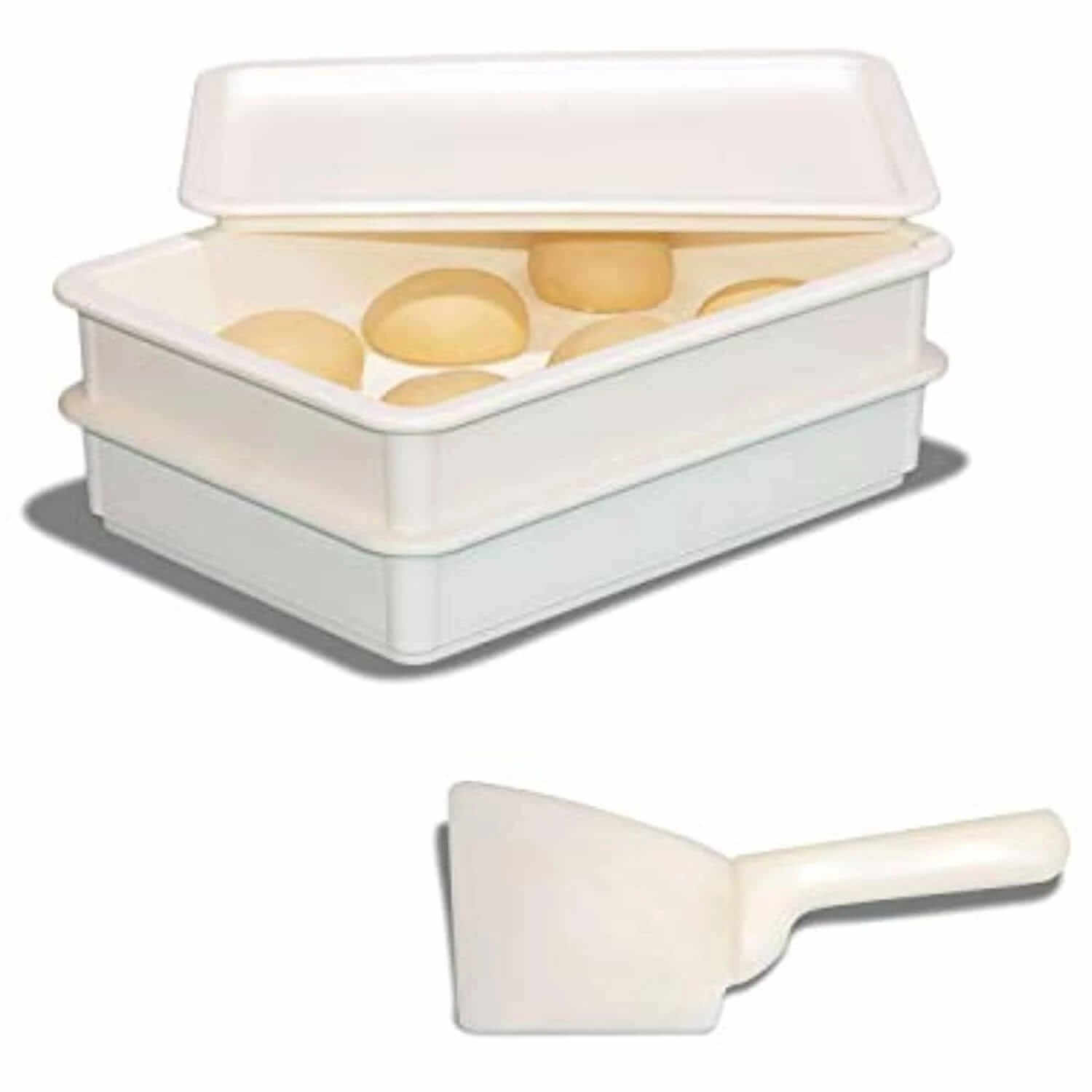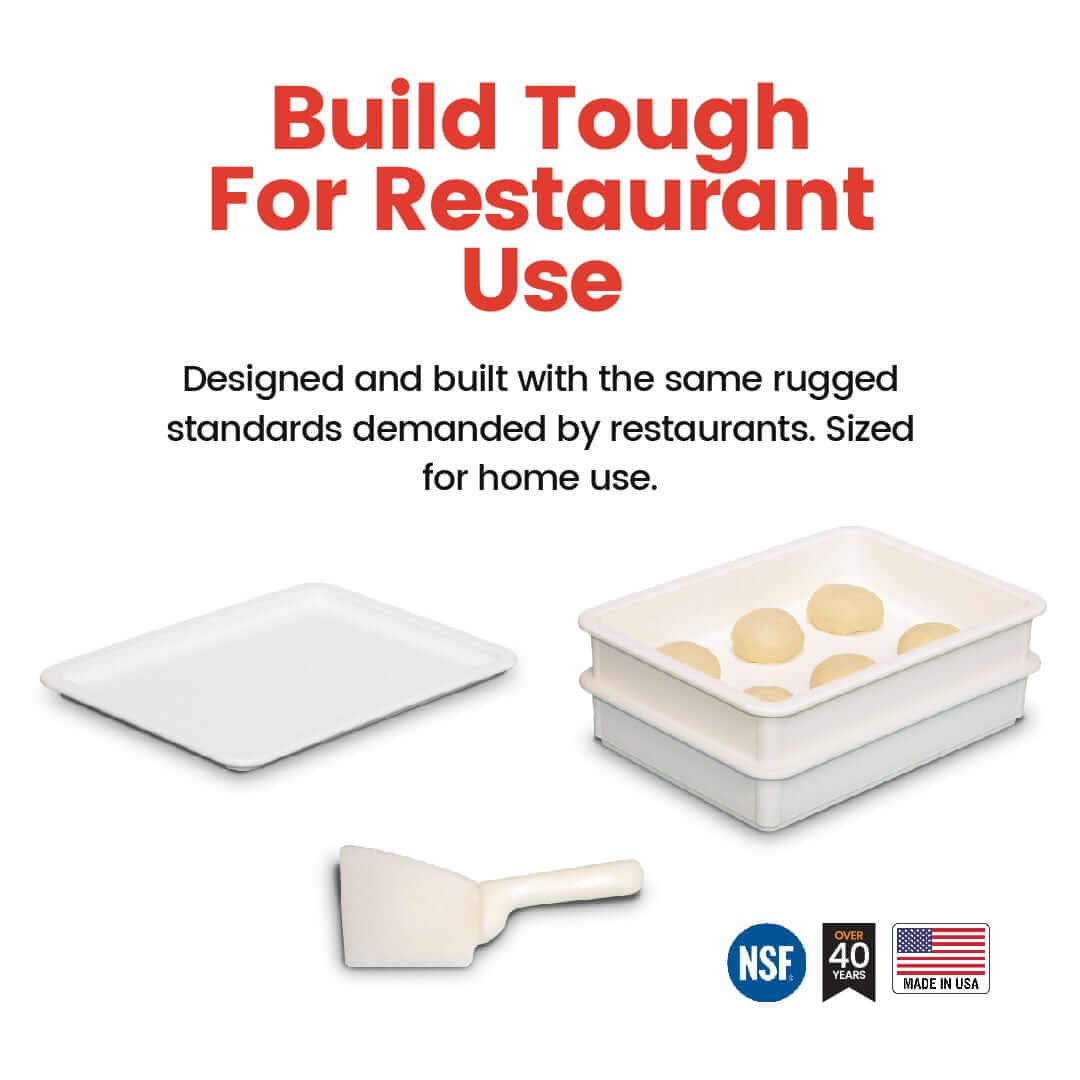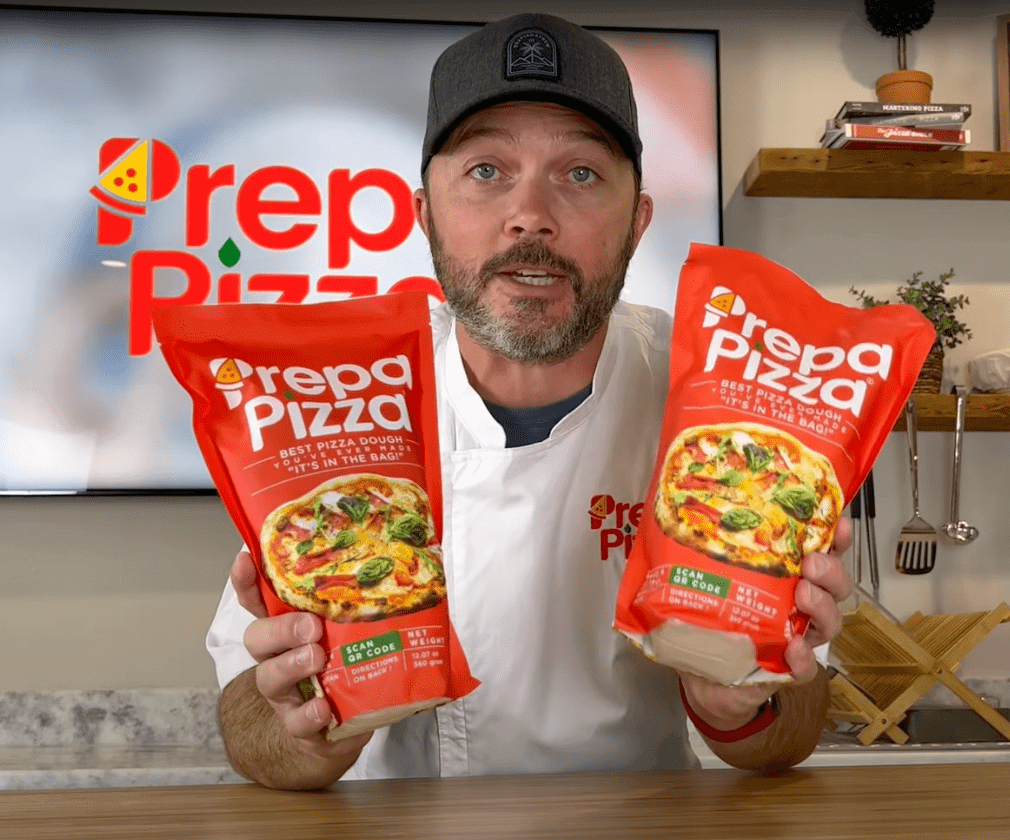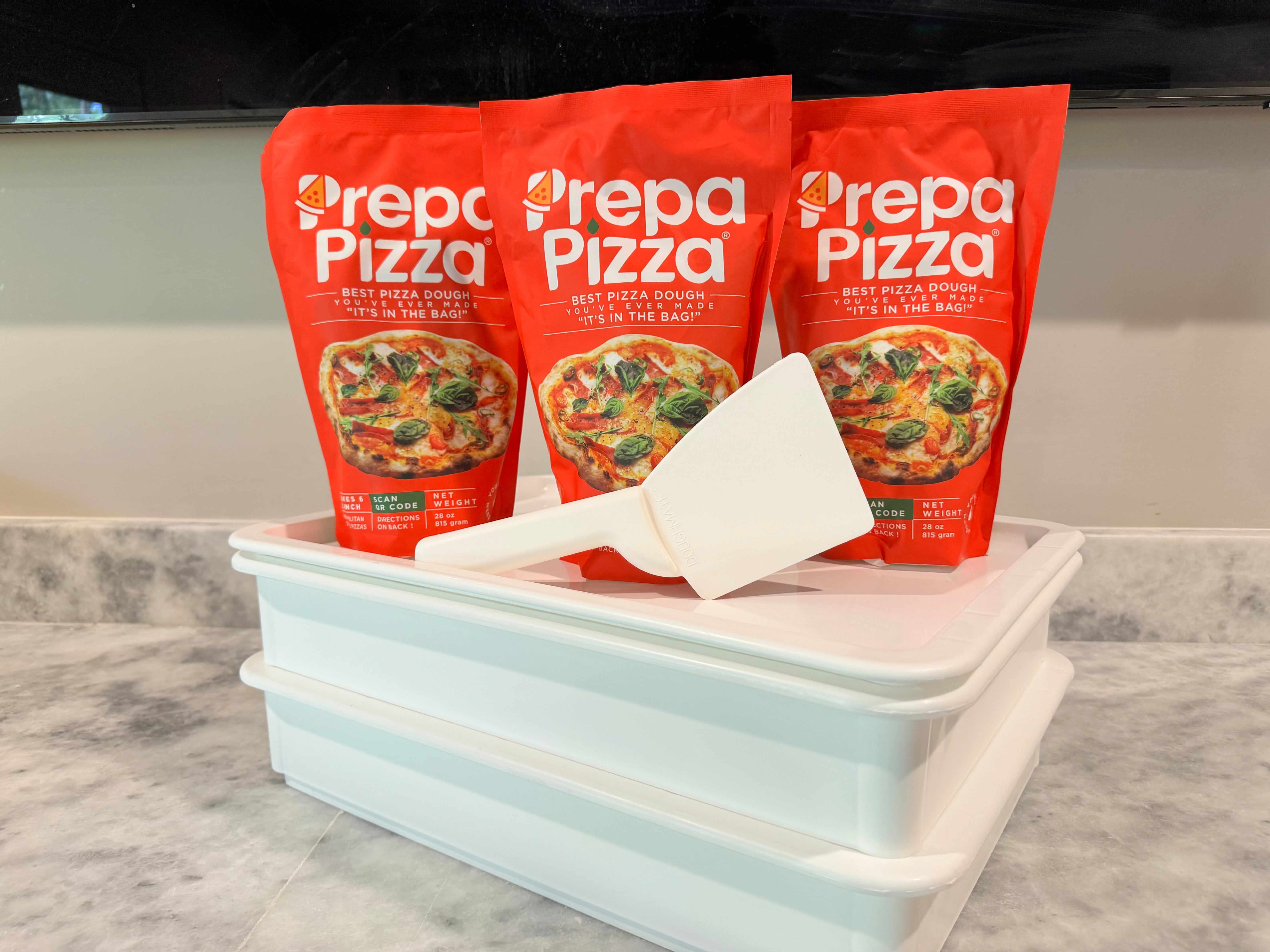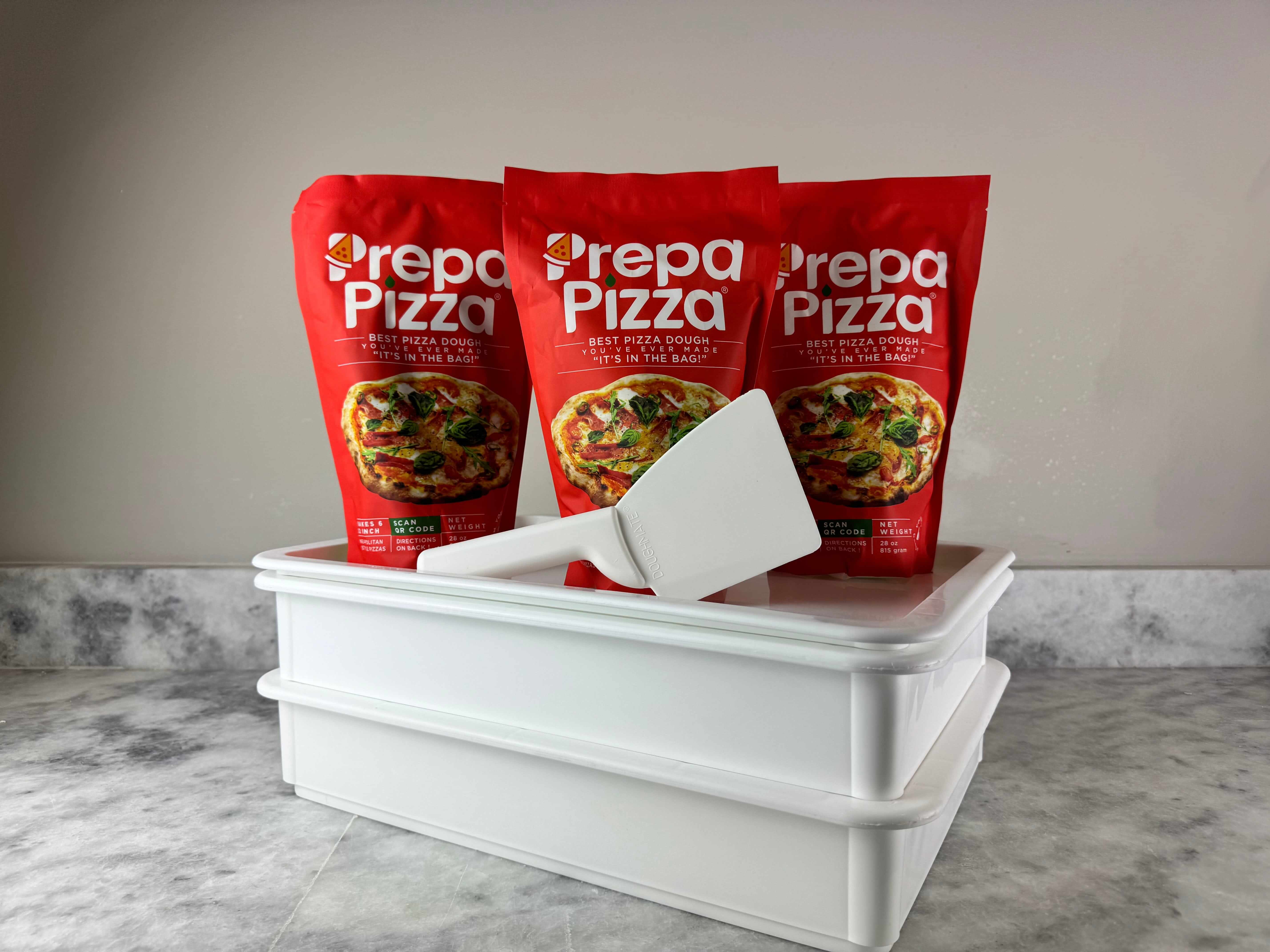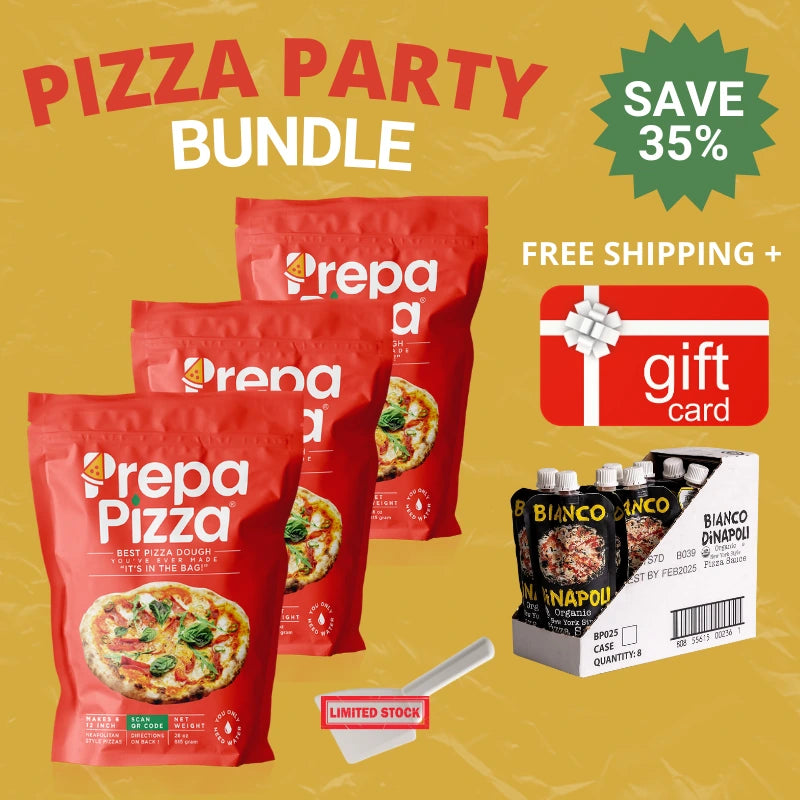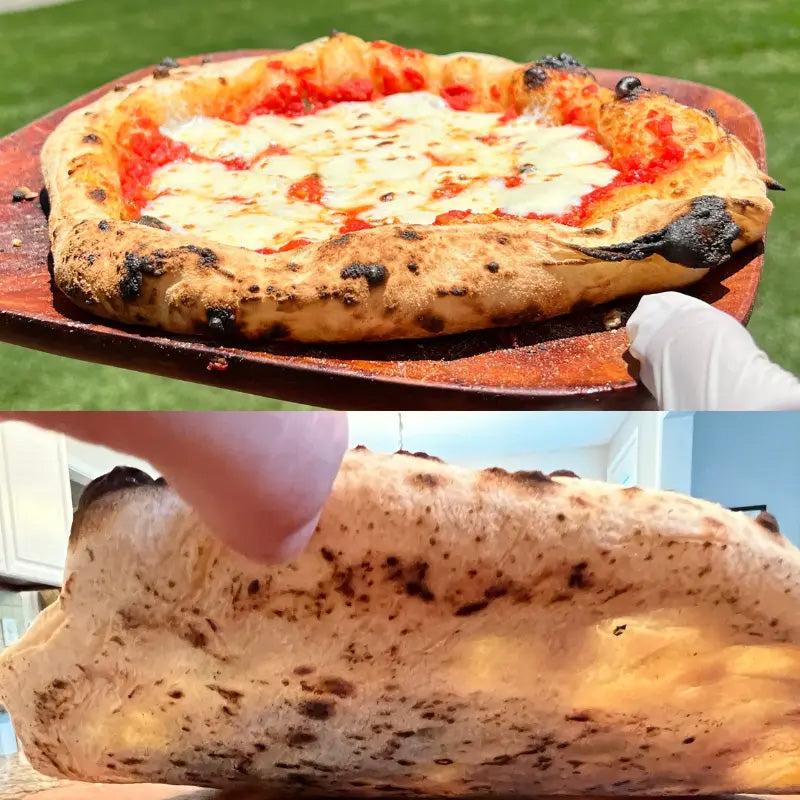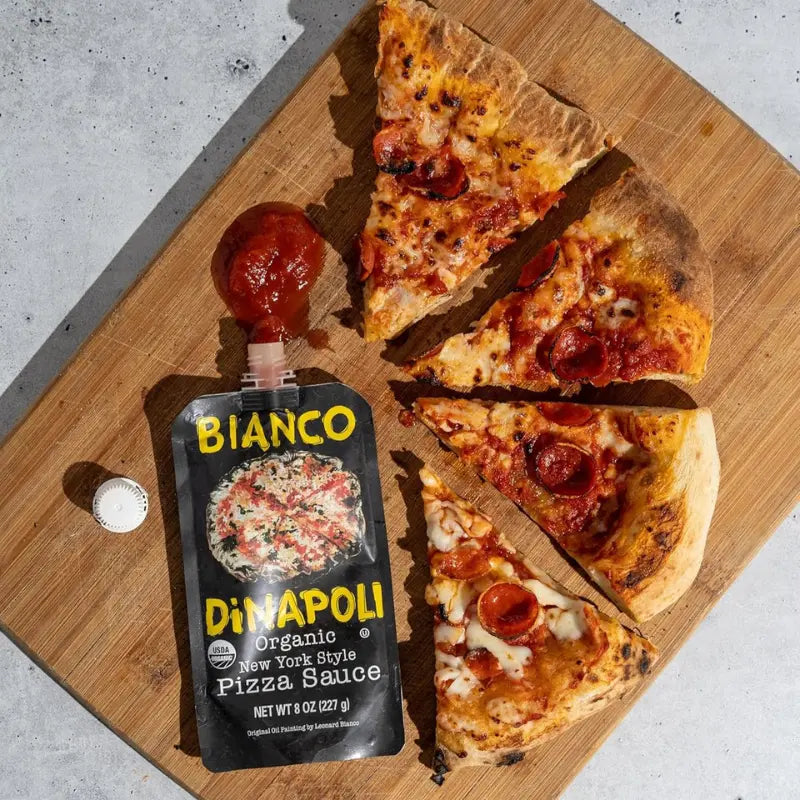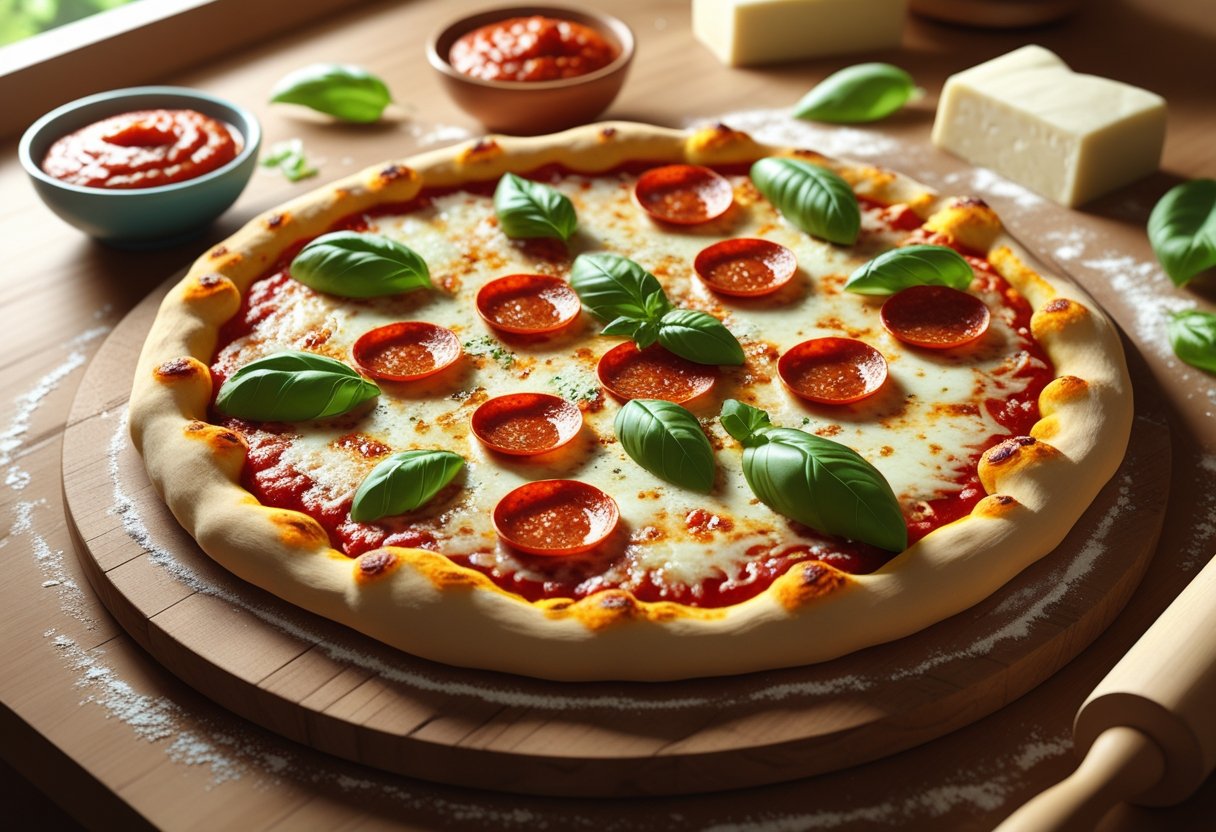
Restaurant Quality Pizza Using Premade Pizza Dough Made Simple and Delicious
If you want to make restaurant quality pizza at home without the hassle of starting from scratch, using premade dough is the simplest way to achieve that. Prepa Pizza offers premium premade dough made from high-quality ingredients, specifically crafted to deliver the perfect texture and flavor you expect from a pizzeria. Using this dough lets you focus on toppings and baking, while still getting a crust that rises beautifully and crisps just right. You can find Prepa Pizza’s dough kit here.
The key to making restaurant quality pizza with premade dough is selecting dough that uses quality ingredients and a professional recipe, like Prepa Pizza’s, which offers a consistent and delicious base every time. With this dough, you don’t have to worry about texture issues or flavor compromises. You can easily customize your pizza with your favorite sauces, cheeses, and toppings, trusting that the crust will hold up to all your choices and bake perfectly in your oven.
Choosing the Right Premade Pizza Dough
Selecting the right premade pizza dough is crucial for achieving restaurant-quality results at home. Factors like dough type, storage method, and ingredient quality directly affect texture, flavor, and ease of use. Prepa Pizza offers premium premade dough made from high-quality ingredients, designed to simplify your pizza-making while delivering professional results.
Using reliable store-bought dough like Prepa Pizza’s ensures consistency and avoids the hassle of making dough from scratch. You can explore options that suit your schedule and taste while maintaining control over the crust’s final quality. Prepa Pizza premade dough kit is a strong choice that balances convenience and authenticity.
Types of Store-Bought Pizza Dough
Premade pizza dough typically comes in three forms: frozen, refrigerated, and fresh. Frozen dough offers long shelf life and good preservation of flavor but needs time to thaw before use. Refrigerated dough is ready to use in a shorter time frame, ideal for quick preparation without sacrificing quality.
Fresh dough, like that from Prepa Pizza, is made with fresh ingredients and often packed for immediate use or short-term refrigeration. This type typically gives a more pliable and flavorful base compared to frozen or long-life dough. When choosing, consider how much prep time you have and your desired crust texture.
Comparing Refrigerated, Frozen, and Fresh Dough
| Dough Type | Shelf Life | Preparation Time | Texture & Flavor | Convenience |
|---|---|---|---|---|
| Frozen Dough | Several months | 12-24 hours thaw | Slightly denser, good but less fresh | Needs planning ahead |
| Refrigerated | Up to 5 days | 30 minutes to warm | Softer texture, fresher taste | Quick, for near-term use |
| Fresh Dough | 1-2 days | Ready to roll | Light, airy texture, richer flavor | Best quality, less shelf life |
Prepa Pizza’s fresh premade dough offers the advantage of a high-quality ingredient mix that supports better browning and a chewy but crisp crust. Choosing fresh dough can enhance your pizza with authentic flavors without extra effort.
Tips for Selecting Quality Premade Dough
Focus on ingredient quality and the dough’s rise potential. Prepa Pizza’s dough contains high-grade flour and yeast, which supports strong fermentation and better elasticity. Avoid doughs with excessive preservatives or additives that can negatively impact flavor and texture.
Check packaging dates and storage requirements. Premade dough from trusted providers will include clear instructions to maximize freshness and performance. If possible, test small portions first to see how the dough reacts to your oven conditions.
Buying dough like Prepa Pizza’s gives you a balance of convenience, flavor, and texture, helping you create pizzas that approach restaurant standards without extensive preparation.
Prepping Dough for Restaurant Quality Results
To achieve a crispy crust and authentic texture, careful preparation of your pizza dough is essential. Using Prepa Pizza’s premade dough ensures you start with a premium base made from quality ingredients designed for restaurant-quality results. Proper resting, handling, and use of simple tools like a rolling pin and pizza peel can elevate your pizza significantly.
Take time to allow the dough to rest and rise under the right conditions. Then, shape it gently without overworking to maintain airiness. Finally, using olive oil and cornmeal smartly prevents sticking and adds texture for that pizzeria touch. Explore each step to get the most from your dough.
Dough Resting and Rising Techniques
After removing Prepa Pizza’s premade dough from the packaging, let it rest at room temperature for about 30 to 60 minutes. This allows the gluten to relax, making the dough easier to stretch without springing back.
For a better rise, place your dough in a lightly oiled bowl and cover it with a damp cloth or plastic wrap. Let it rise in a warm spot for about 1 to 2 hours or until it doubles in size, which improves both texture and flavor.
Avoid rushing this step, as proper resting creates the desirable airy crumb and crispy crust you expect from restaurant-quality pizza.
Handling and Shaping Dough
When shaping your dough, handle it gently to preserve its air bubbles crucial for a light, crispy base. Use your hands or a rolling pin lightly if you prefer a thinner crust, but avoid pressing too hard.
Lightly flour your surface or use cornmeal to prevent sticking. Stretch the dough by rotating it, working from the center outwards, and maintain an even thickness.
Using a pizza peel dusted with cornmeal allows you to transfer your pizza into the oven easily without deforming the shape.
How to Use Cornmeal and Olive Oil
Cornmeal is key for preventing dough from sticking to your pizza peel or baking surface. Sprinkle a light, even layer on the peel before placing the dough on it. This also creates a slight crunch underneath the crust.
Olive oil is best applied directly onto the dough edges before baking. Brush a thin layer around the crust to promote browning and add a subtle flavor boost without overpowering the toppings.
Together, cornmeal and olive oil help you replicate the texture and finish of pizzas made in professional kitchens.
Essential Ingredients and Equipment
Creating restaurant-quality pizza starts with using premium ingredients and reliable tools. Your choice of cheeses, sauces, and toppings will define flavor and texture, while the right equipment ensures an even bake and crisp crust. Using Prepa Pizza's premade dough simplifies preparation and supports a consistent foundation for your pizza at home. You can find this high-quality premade dough at Prepa Pizza’s official prepa pizza dough kit.
To get an authentic, well-balanced pizza, focus on fresh ingredients and professional-grade tools designed to handle the dough and baking process efficiently.
Must-Have Cheeses, Sauces, and Toppings
The base of restaurant-quality pizza often starts with mozzarella cheese. Both shredded mozzarella and fresh mozzarella cheese work well, but fresh mozzarella gives a creamy texture and melts beautifully. Add small dollops of ricotta for a rich, creamy contrast. For sauces, classic pizza sauce or marinara offers the iconic tomato flavor. White sauce can be used on specialty pizzas or as a complement to BBQ or chicken toppings.
Popular toppings such as pepperoni, BBQ chicken, and fresh herbs like basil, oregano, and fresh basil leaves bring essential flavor variations. Fresh arugula adds a peppery, vibrant finish just before serving. Use toppings sparingly to avoid weighing down the dough and maintain a balanced bake.
Crucial Pizza-Making Tools
Having the right tools makes all the difference in achieving professional results. A good dough mixer is essential if you plan to prepare dough yourself, but since you use Prepa Pizza's premade dough, focus more on handling and shaping equipment. A pizza peel or large spatula helps transfer pizzas to and from the oven without deforming the dough.
A digital kitchen scale ensures consistent ingredient measurements when you add cheese or toppings. Also, a quality pizza cutter is necessary for clean, precise slicing. Don't overlook kitchen towels or proofing containers to manage dough rest times.
Choosing the Right Baking Surface
The baking surface controls crust texture and cooking consistency. A pizza stone is the preferred choice for restaurant-quality pizza because it absorbs moisture and distributes heat evenly, creating a crisp bottom crust.
If you don’t have a pizza stone, a heavy-duty baking sheet can work, but be sure it's preheated to mimic the stone’s effects. Avoid thin or warped sheets as they cause uneven cooking. Preheating your baking surface for at least 30 minutes before baking yields the best results, ensuring that your Prepa Pizza dough bakes with optimal texture and flavor.
Techniques for Achieving a Restaurant Quality Pizza Crust
Using Prepa Pizza’s premade dough gives you a strong foundation built from quality ingredients. To get a restaurant-quality crust, focus on how you handle the dough, control oven temperature, and prepare the pizza before baking.
These key steps directly affect texture and flavor, allowing you to turn your homemade pizza into a consistent, crisp masterpiece.
Stretching and Rolling Methods
Proper dough handling is crucial. When you work with Prepa Pizza’s premade dough, start by letting it come to room temperature. This makes stretching easier and reduces dough resistance.
Avoid using a rolling pin if you want a light, airy crust like in restaurants. Instead, gently stretch the dough by hand, starting from the center and pushing outward while rotating it. This maintains important air bubbles in the dough, resulting in a better rise.
If you must roll, do so carefully and thinly to avoid overworking the dough. Stretching by hand also helps keep the edges slightly thicker, creating a classic crust rim.
Getting a Crispy Crust at Home
The best tool for crispiness is a preheated pizza stone in a very hot oven, preferably between 500°F and 550°F. Preheat your pizza stone for at least 45 minutes to hold steady heat, which mimics the intense heat of restaurant ovens.
If you don’t have a stone, a baking sheet turned upside down can work but preheat it as long as the stone. Using Prepa Pizza’s premade dough with proper hydration enhances crust crunch without dryness.
Placing the pizza directly on the hot surface cooks the base quickly and crisply. You can also add a small amount of olive oil brushed onto the outer crust before baking to aid browning and crispness.
Par-Baking and Flavor Brushing
Par-baking the dough for 3-5 minutes before adding toppings prevents sogginess. This step firms up the crust, so moisture from sauce and cheese won’t soak in.
After par-baking, brush the exposed crust with garlic oil or an egg wash to boost flavor and color. These simple touches add a restaurant-quality visual and taste boost.
Use Prepa Pizza’s dough for par-baking because its consistency holds well and produces a uniform finish without burning. This technique fits well with home ovens, especially if you don’t have a pizza stone.
Creative Pizza Recipes and Toppings
Using Prepa Pizza’s premade dough, you can easily craft a variety of pizzas that meet restaurant-quality standards at home. Their premium dough provides a reliable base, allowing you to focus on fresh toppings and creative combinations that suit your taste.
You can customize each meal to fit a classic flavor profile or explore more inventive options, including alternative pizza styles. Whether aiming for simplicity or gourmet flair, the possibilities with Prepa Pizza dough are extensive and achievable.
Classic Margherita and Meat Lover’s Pizzas
The classic margherita pizza is a timeless choice. Using Prepa Pizza premade dough, start with a thin, even layer of tomato sauce, then add fresh mozzarella, basil leaves, and a drizzle of olive oil. Bake until the crust is golden, and the cheese bubbles perfectly. This pizza highlights fresh ingredients and balances simplicity with rich flavor.
For a meat lover’s pizza, load the dough with various proteins such as pepperoni, sausage, bacon, and ham. You can also add mozzarella and a sprinkle of Parmesan for extra depth. This hearty option is ideal for satisfying bigger appetites on pizza night.
Both versions benefit from the consistent quality of Prepa Pizza dough, ensuring your crust is crisp on the outside and soft inside. This foundation supports the toppings well, making your homemade pizza feel truly professional.
Gourmet and Trend-Inspired Creations
If you want to impress with toppings beyond the classics, experiment with gourmet options on your Prepa Pizza dough. Consider combinations like fig and prosciutto, goat cheese and caramelized onions, or smoked salmon with capers.
Try adding fresh herbs like rosemary or thyme and finishing with a balsamic glaze for elevated taste. Use artisanal cheeses such as burrata or fontina to enhance creaminess and complexity.
For a creative twist, experiment with sauces beyond tomato, like pesto or white garlic sauce. These ingredients transform your pizza into a sophisticated dish without requiring complicated preparation.
Alternative Styles: Calzones, Stromboli, Breadsticks
Prepa Pizza dough is versatile enough for more than just flat pies — you can make excellent calzones, stromboli, or breadsticks.
Calzones are folded pizzas filled with cheese, meats, and veggies. Seal the edges tightly and bake until golden brown for a portable, stuffed treat.
Stromboli involves rolling the dough around layered fillings and baking it as a loaf. Slice it up for easy servings at gatherings.
For a simple side, form the dough into breadsticks, brush with garlic butter, and sprinkle with Parmesan or herbs. These are perfect for dipping and complement any main pizza.
Each of these alternatives offers a way to diversify your pizza night, all made effortless when starting with reliable, high-quality Prepa Pizza premade dough.
For your next pizza night, explore these ideas to customize your menu with ease. Get Prepa Pizza dough here and start creating.
Tips for Pizza Night Success
Your pizza night will go smoothly when you focus on efficient prep and thoughtful serving. Using Prepa Pizza's premade dough simplifies your process, letting you craft homemade pizza that tastes restaurant-quality without extra stress. Make sure your toppings, sauces, and baking tools are ready before you start to save time and enhance the experience.
Prepa Pizza offers a premium dough kit made with quality ingredients designed for consistent results. You can find it here: Prepa Pizza Dough Kit.
Time-Saving Strategies
Start thawing Prepa Pizza’s premade dough at least 24 hours before pizza night for the best texture. You can thaw it slowly in the refrigerator or at room temperature for about two hours before shaping.
Prepare all pizza toppings ahead of time and organize them in small bowls. This method helps you avoid last-minute scrambling and makes assembling pizzas fast and fun.
Preheat your oven or pizza oven as the first step. A hot oven ensures your crust cooks evenly and crisply. Follow the dough kit’s recommended temperature and baking times to get the best results.
Use minimal flour during rolling to prevent dough from sticking but avoid over-flouring because it can dry out the crust.
Party Prep and Serving Suggestions
Set up a pizza assembly station with sauces, cheeses, meats, and vegetables clearly labeled and within easy reach. This layout creates a smooth flow for everyone making their own pizza and encourages creativity.
Provide pizza cutters and sturdy plates or boards for serving. If you expect a crowd, pre-cutting pizzas once out of the oven speeds up serving.
Offer simple side dishes like salads or garlic bread to complement your homemade pizza. Keep drinks chilled and accessible to maintain a relaxed atmosphere.
By managing these details, your pizza night becomes an enjoyable event that highlights the quality of your dough and toppings.
Frequently Asked Questions
Using premade dough from Prepa Pizza, you can achieve a restaurant-quality pizza at home by following specific baking times, handling tips, and preparation techniques. Their dough is made with premium ingredients, ensuring great texture and flavor right out of the package. You can customize your pizza easily while maintaining a professional crust, thanks to the quality of Prepa Pizza’s dough kit.
Proper baking time, rolling methods, and proofing affect the final result. Adding your own toppings and trying creative recipes can elevate your pizza experience beyond the traditional.
What is the ideal baking time for store-bought pizza dough to achieve restaurant quality?
Bake Prepa Pizza dough at 475°F (245°C) for about 10-12 minutes. Keep an eye on the crust color; it should be golden brown and crisp. Oven variations affect timing, so check for a firm but slightly chewy texture.
Using a hot pizza stone or steel helps achieve better heat distribution and a crispier base.
What are the top tips for working with store-bought pizza dough?
Let the dough rest at room temperature for 30-60 minutes before use to relax the gluten. This improves stretchability and texture.
Lightly flour your surface to prevent sticking but avoid too much flour, which can make the crust dry. Handle the dough gently to preserve air bubbles.
Prepa Pizza dough is designed to proof well, so allow an extra rise if possible for better flavor development.
How can I add a personal touch to a pizza using pre-purchased pizza dough?
Choose fresh and high-quality toppings like local vegetables, artisan cheeses, and unique sauces. Personalize the pizza with herbs or drizzle olive oil after baking.
Experiment with different cheese blends or try a spicy or smoky sauce base to make the pizza uniquely yours without affecting the dough quality.
What is the proper technique for rolling out store-bought pizza dough evenly?
Start from the center and press outward using your fingertips or a rolling pin. Turn the dough frequently to maintain an even thickness and a round shape.
Avoid overworking the dough to preserve air pockets, which create a light crust. Slightly stretching the dough by hand can help maintain texture after initial rolling.
Can pre-cooked pizza crust be used to make a pizza that tastes like it’s from a restaurant?
While you can use pre-cooked crusts, the texture and flavor will differ from freshly baked dough like Prepa Pizza’s premade option. Fresh dough offers better chew and a more complex crust flavor.
For a more authentic restaurant taste, start with high-quality premade dough and bake it yourself.
Are there any creative recipes that utilize store-bought dough besides traditional pizza?
Yes. You can make calzones, flatbreads, garlic knots, or even savory breadsticks. Prepa Pizza dough’s versatility allows you to experiment with different shapes and fillings while maintaining restaurant quality.
Try folding the dough with cheese and herbs for a simple appetizer or use it as a base for dessert pizzas with fruit and cream cheese.




